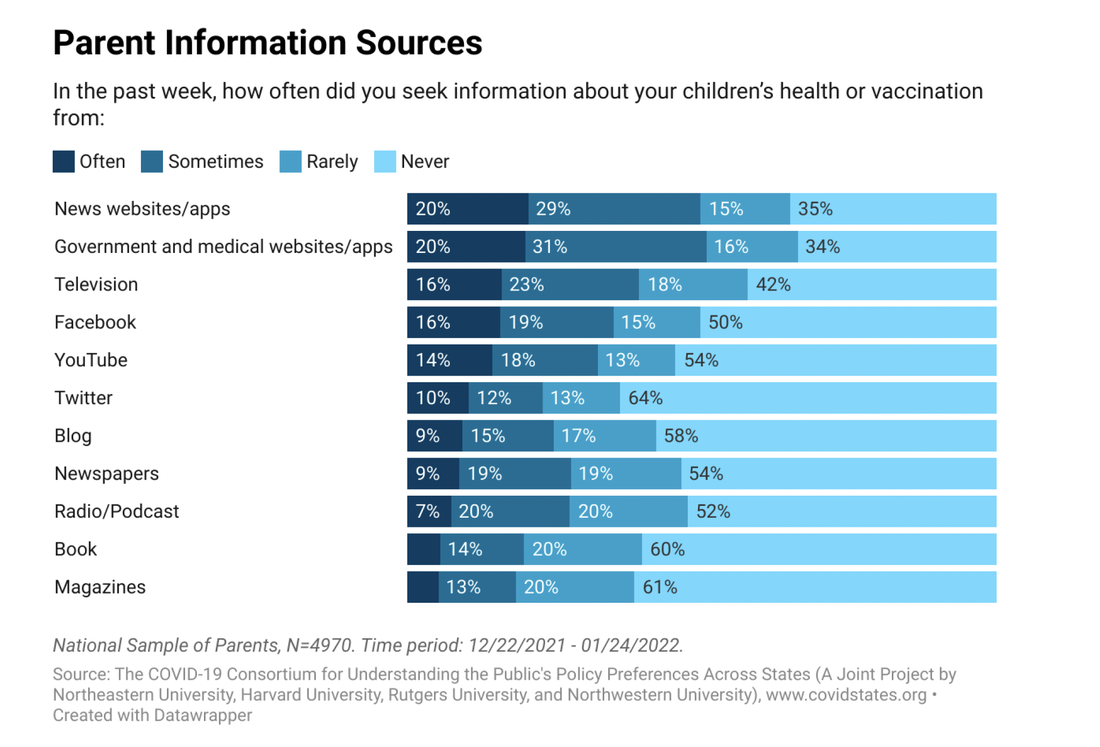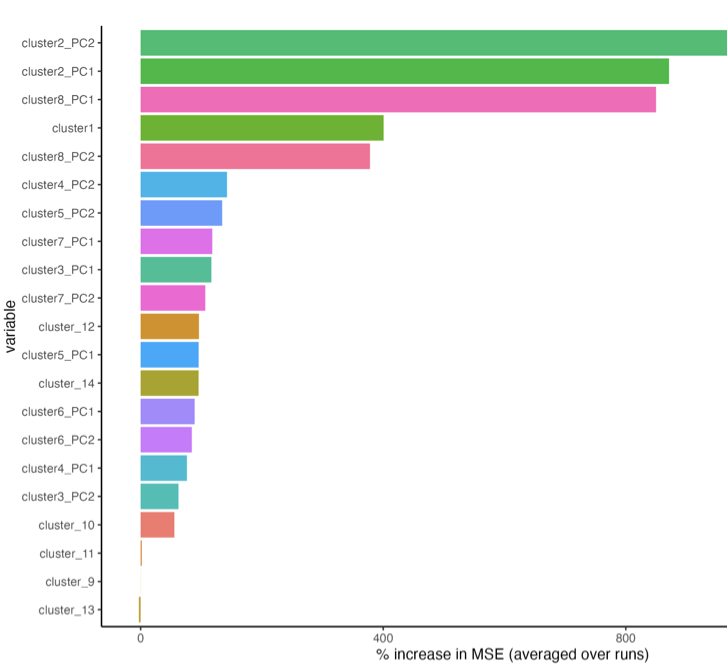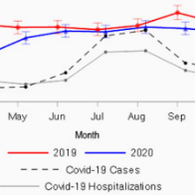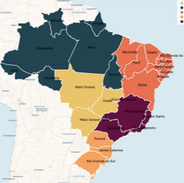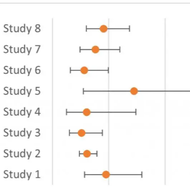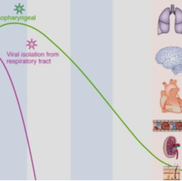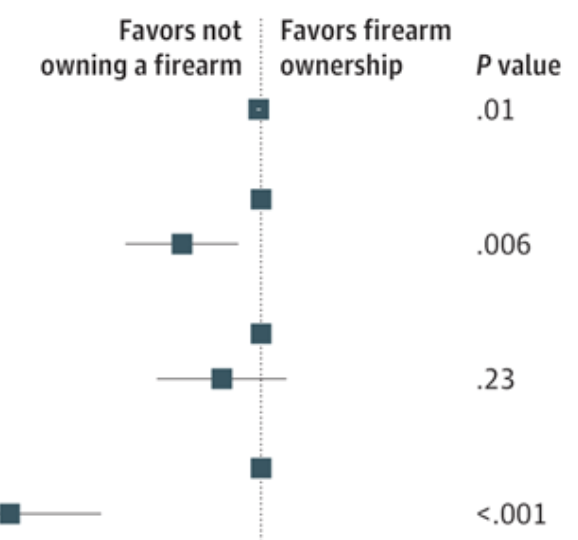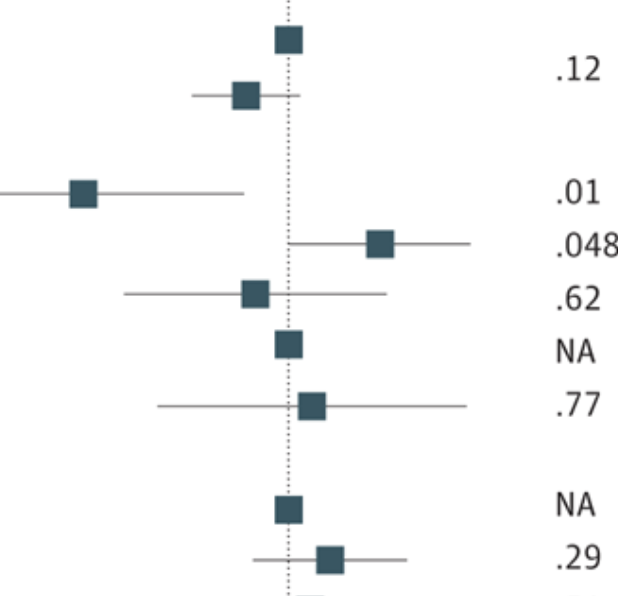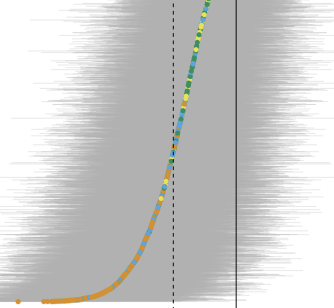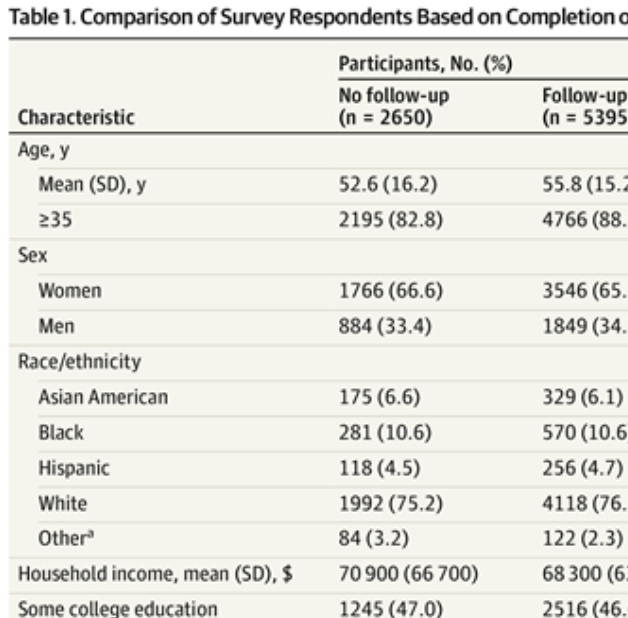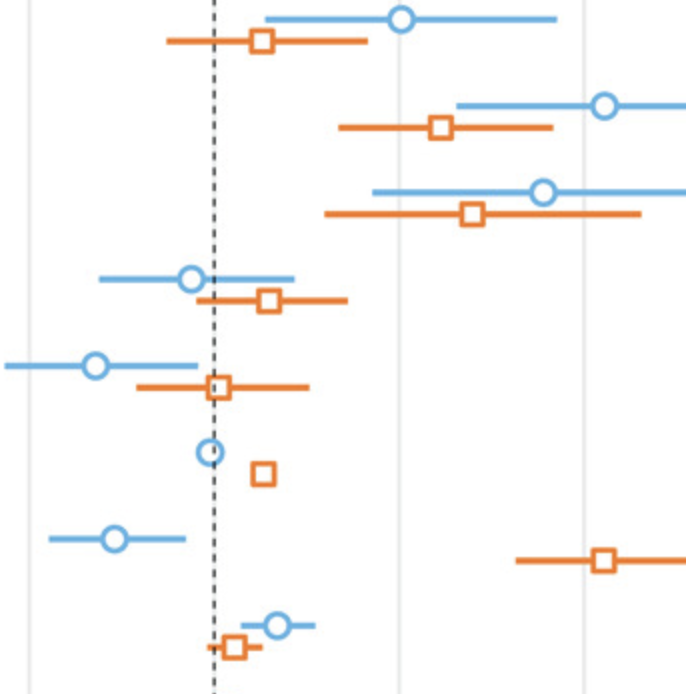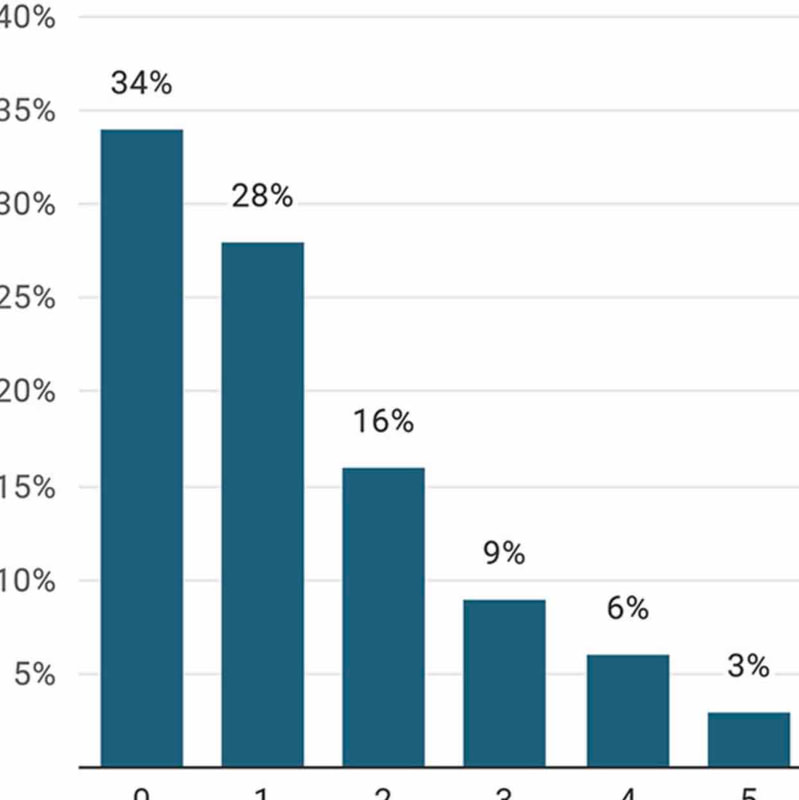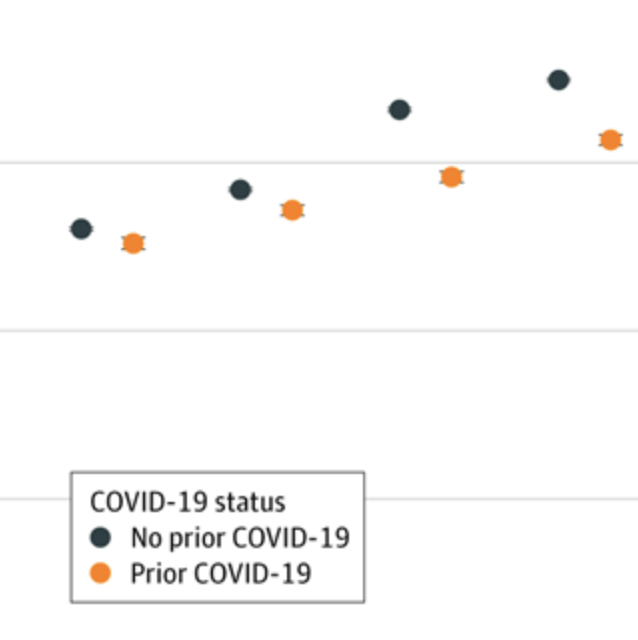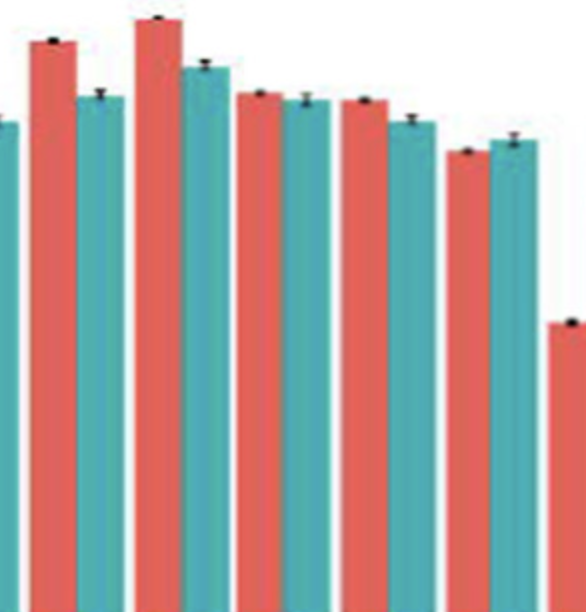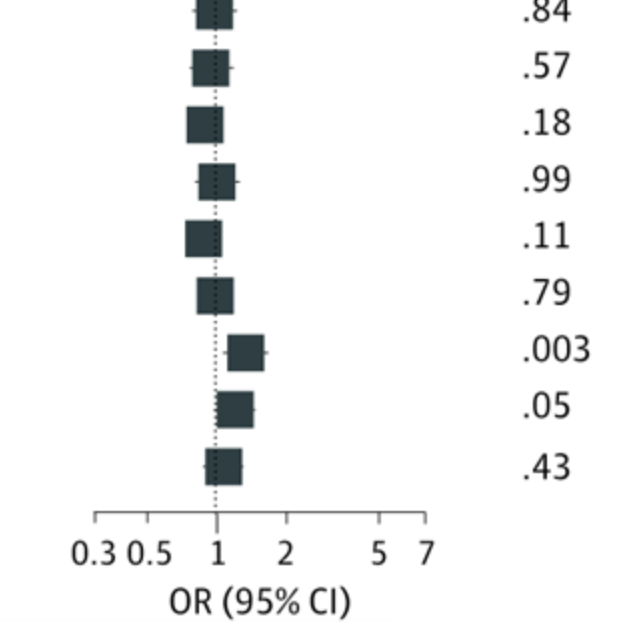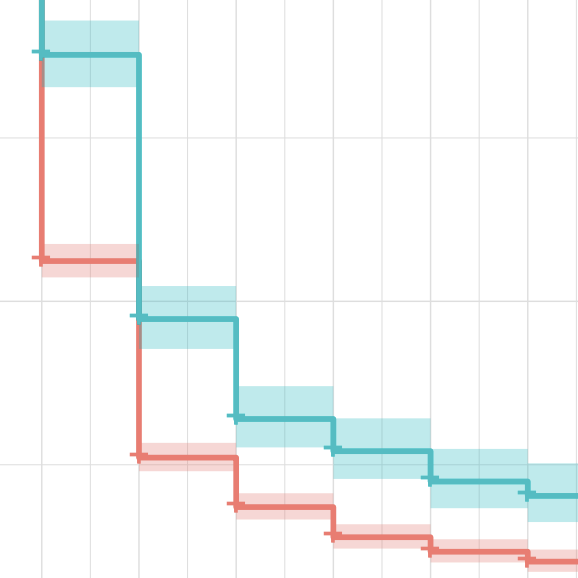Research |
Monitoring Changes in Human Behaviors during the COVID-19 Pandemic
|
The 50-state COVID-19 project was launched in March 2020 by a multi-university group of researchers with expertise in computational social science, network science, public opinion polling, epidemiology, public health, communication, and political science. We aim to help practitioners and governments to make informed decisions and allocate resources more effectively. Our research seeks to identify links between social behaviors and virus transmission, as well as and the impact of messaging and regulation on individual and community outcomes during this crisis. We are sharing our data and insights directly with collaborators and decision-makers, as well as making our findings public online.
Our team is an active collaborator of this initiative and Prof. Santillana is one of the Principal Investigators in the COVID-states project. |
placeholder figure caption
|
Related publications
|
Modeling the relative influence of socio-demographic variables on post-acute COVID-19 quality of life: an application to settings in Europe, Asia, Africa, and South America
Tigist F. Menkir, Barbara Wanjiru Citarella, Louise Sigfrid, Yash Doshi, Luis Felipe Reyes, Jose A. Calvache, Anders Benjamin Kildal, Anders B. Nygaard, Jan Cato Holter, Prasan Kumar Panda, Waasila Jassat, Laura Merson, Christl A. Donnelly, Mauricio Santillana, Caroline Buckee, Stéphane Verguet, Nima S. Hejazi. medRxiv preprint doi: ttps://doi.org/10.1101/2024.02.21.24303099 Abstract
Long-term COVID-19 complications are a globally pervasive threat, but their plausible social drivers are often not prioritized. Here, we use data from a multinational consortium to quantify the relative contributions of social and clinical factors to differences in quality of life among participants experiencing long COVID and measure the extent to which social variables’ impacts can be attributed to clinical intermediates, across diverse contexts. In addition to age, neuropsychological and rheumatological comorbidities, educational attainment, employment status, and female sex were identified as important predictors of long COVID-associated quality of life days (long COVID QALDs). Furthermore, a great majority of their impacts on long COVID QALDs could not be tied to key long COVID-predicting comorbidities, such as asthma, diabetes, hypertension, psychological disorder, and obesity. In Norway, 90% (95% CI: 77%, 100%) of the effect of belonging to the highest versus lowest educational attainment quintile was not attributed to intermediate comorbidity impacts. The same was true for 86% (73%, 100%) of the protective effects of full-time employment versus all other employment status categories (excluding retirement) in the UK and 74% (46%,100%) of the protective effects of full-time employment versus all other employment status categories in a cohort of four middle-income countries (MIC). Of the effects of female sex on long COVID QALDs in Norway, UK, and the MIC cohort, 77% (46%,100%), 73% (52%, 94%), and 84% (62%, 100%) were unexplained by the clinical mediators, respectively. Our findings highlight that socio-economic proxies and sex may be as predictive of long COVID QALDs as commonly emphasized comorbidities and that broader structural determinants likely drive their impacts. Importantly, we outline a multi-method, adaptable causal machine learning approach for evaluating the isolated contributions of social disparities to long COVID quality of life experiences. |
|
Cognitive Symptoms of Post–COVID-19 Condition and Daily Functioning
Abhishek Jaywant, Faith M. Gunning, Lauren E. Oberlin, Mauricio Santillana, Katherine Ognyanova, James N. Druckman, Matthew A. Baum, David Lazer, Roy H. Perlis. JAMA Netw Open. 2024;7(2):e2356098. Abstract
Importance The frequent occurrence of cognitive symptoms in post–COVID-19 condition has been described, but the nature of these symptoms and their demographic and functional factors are not well characterized in generalizable populations. Objective To investigate the prevalence of self-reported cognitive symptoms in post–COVID-19 condition, in comparison with individuals with prior acute SARS-CoV-2 infection who did not develop post–COVID-19 condition, and their association with other individual features, including depressive symptoms and functional status. Design, Setting, and Participants Two waves of a 50-state nonprobability population-based internet survey conducted between December 22, 2022, and May 5, 2023. Participants included survey respondents aged 18 years and older. Exposure Post–COVID-19 condition, defined as self-report of symptoms attributed to COVID-19 beyond 2 months after the initial month of illness. Main Outcomes and Measures Seven items from the Neuro-QoL cognition battery assessing the frequency of cognitive symptoms in the past week and patient Health Questionnaire-9. Results The 14 767 individuals reporting test-confirmed COVID-19 illness at least 2 months before the survey had a mean (SD) age of 44.6 (16.3) years; 568 (3.8%) were Asian, 1484 (10.0%) were Black, 1408 (9.5%) were Hispanic, and 10 811 (73.2%) were White. A total of 10 037 respondents (68.0%) were women and 4730 (32.0%) were men. Of the 1683 individuals reporting post–COVID-19 condition, 955 (56.7%) reported at least 1 cognitive symptom experienced daily, compared with 3552 of 13 084 (27.1%) of those who did not report post–COVID-19 condition. More daily cognitive symptoms were associated with a greater likelihood of reporting at least moderate interference with functioning (unadjusted odds ratio [OR], 1.31 [95% CI, 1.25-1.36]; adjusted [AOR], 1.30 [95% CI, 1.25-1.36]), lesser likelihood of full-time employment (unadjusted OR, 0.95 [95% CI, 0.91-0.99]; AOR, 0.92 [95% CI, 0.88-0.96]) and greater severity of depressive symptoms (unadjusted coefficient, 1.40 [95% CI, 1.29-1.51]; adjusted coefficient 1.27 [95% CI, 1.17-1.38). After including depressive symptoms in regression models, associations were also found between cognitive symptoms and at least moderate interference with everyday functioning (AOR, 1.27 [95% CI, 1.21-1.33]) and between cognitive symptoms and lower odds of full-time employment (AOR, 0.92 [95% CI, 0.88-0.97]). Conclusions and Relevance The findings of this survey study of US adults suggest that cognitive symptoms are common among individuals with post–COVID-19 condition and associated with greater self-reported functional impairment, lesser likelihood of full-time employment, and greater depressive symptom severity. Screening for and addressing cognitive symptoms is an important component of the public health response to post–COVID-19 condition. |
|
A 50-state survey study of thoughts of suicide and social isolation among older adults in the United States
Nili Solomonov, Jon Green, Alexi Quintana, Jennifer Lin, Katherine Ognyanova, Mauricio Santillana, James N Druckman, Matthew A Baum, David Lazer, Faith M Gunning, Roy H Perlis Journal of affective disorders. 2023; 334:43-49. Abstract
BackgroundWe aimed to characterize the prevalence of social disconnection and thoughts of suicide among older adults in the United States, and examine the association between them in a large naturalistic study. MethodsWe analyzed data from 6 waves of a fifty-state non-probability survey among US adults conducted between February and December 2021. The internet-based survey collected the PHQ-9, as well as multiple measures of social connectedness. We applied multiple logistic regression to analyze the association between presence of thoughts of suicide and social disconnection. Exploratory analysis, using generalized random forests, examined heterogeneity of effects across sociodemographic groups. ResultsOf 16,164 survey respondents age 65 and older, mean age was 70.9 (SD 5.0); the cohort was 61.4 % female and 29.6 % male; 2.0 % Asian, 6.7 % Black, 2.2 % Hispanic, and 86.8 % White. A total of 1144 (7.1 %) reported thoughts of suicide at least several days in the prior 2 week period. In models adjusted for sociodemographic features, households with 3 or more additional members (adjusted OR 1.73, 95 % CI 1.28–2.33) and lack of social supports, particularly emotional supports (adjusted OR 2.60, 95 % CI 2.09–3.23), were independently associated with greater likelihood of reporting such thoughts, as was greater reported loneliness (adjusted OR 1.75, 95 % CI 1.64–1.87). The effects of emotional support varied significantly across sociodemographic groups. ConclusionsThoughts of suicide are common among older adults in the US, and associated with lack of social support, but not with living alone. |
|
Estimating the impact of the COVID-19 pandemic on dengue in Brazil
Kirstin Oliveira Roster, Tiago Martinelli, Colm Connaughton, Mauricio Santillana, Francisco Rodrigues Research Square. 2023; rs. 3. rs-2548491. Abstract
Atypical dengue prevalence was observed in 2020 in many dengue-endemic countries, including Brazil. Evidence suggests that the pandemic disrupted not only dengue dynamics due to changes in mobility patterns, but also several aspects of dengue surveillance, such as care seeking behavior, care availability, and monitoring systems. However, we lack a clear understanding of the overall impact on dengue in different parts of the country as well as the role of individual causal drivers. In this study, we estimated the gap between expected and observed dengue cases in 2020 using an interrupted time series design with forecasts from a neural network and a structural Bayesian time series model. We also decomposed the gap into the impacts of climate conditions, pandemic-induced changes in reporting, human susceptibility, and human mobility. We find that there is considerable variation across the country in both overall pandemic impact on dengue and the relative importance of individual drivers. Increased understanding of the causal mechanisms driving the 2020 dengue season helps mitigate some of the data gaps caused by the COVID-19 pandemic and is critical to developing effective public health interventions to control dengue in the future. |
|
Association of post–COVID-19 condition symptoms and employment status
Roy H Perlis, Kristin Lunz Trujillo, Alauna Safarpour, Mauricio Santillana, Katherine Ognyanova, James Druckman, David Lazer JAMA network open. 2023; 6(2):e2256152-e2256152. Abstract
Importance Little is known about the functional correlates of post–COVID-19 condition (PCC), also known as long COVID, particularly the relevance of neurocognitive symptoms. Objective To characterize prevalence of unemployment among individuals who did, or did not, develop PCC after acute infection. Design, Setting, and Participants This survey study used data from 8 waves of a 50-state US nonprobability internet population-based survey of respondents aged 18 to 69 years conducted between February 2021 and July 2022. Main Outcomes and Measures The primary outcomes were self-reported current employment status and the presence of PCC, defined as report of continued symptoms at least 2 months beyond initial month of symptoms confirmed by a positive COVID-19 test. Results The cohort included 15 308 survey respondents with test-confirmed COVID-19 at least 2 months prior, of whom 2236 (14.6%) reported PCC symptoms, including 1027 of 2236 (45.9%) reporting either brain fog or impaired memory. The mean (SD) age was 38.8 (13.5) years; 9679 respondents (63.2%) identified as women and 10 720 (70.0%) were White. Overall, 1418 of 15 308 respondents (9.3%) reported being unemployed, including 276 of 2236 (12.3%) of those with PCC and 1142 of 13 071 (8.7%) of those without PCC; 8229 respondents (53.8%) worked full-time, including 1017 (45.5%) of those with PCC and 7212 (55.2%) without PCC. In survey-weighted regression models excluding retired respondents, the presence of PCC was associated with a lower likelihood of working full-time (odds ratio [OR], 0.71 [95% CI, 0.63-0.80]; adjusted OR, 0.84 [95% CI, 0.74-0.96]) and with a higher likelihood of being unemployed (OR, 1.45 [95% CI, 1.22-1.73]; adjusted OR, 1.23 [95% CI, 1.02-1.48]). The presence of any cognitive symptom was associated with lower likelihood of working full time (OR, 0.70 [95% CI, 0.56-0.88]; adjusted OR, 0.75 [95% CI, 0.59-0.84]). Conclusions and Relevance PCC was associated with a greater likelihood of unemployment and lesser likelihood of working full time in adjusted models. The presence of cognitive symptoms was associated with diminished likelihood of working full time. These results underscore the importance of developing strategies to treat and manage PCC symptoms. |
|
Correlates of symptomatic remission among individuals with post-COVID-19 condition
Roy H Perlis, Mauricio Santillana, Katherine Ognyanova, David Lazer medRxiv. 2023.01. 31.23285246 Abstract
Importance: Post-COVID-19 condition (PCC), or long COVID, has become prevalent. The course of this syndrome, and likelihood of remission, has not been characterized. Objective: To quantify the rates of remission of PCC, and the sociodemographic features associated with remission. Design: 16 waves of a 50-state U.S. non-probability internet survey conducted between August 2020 and November 2022 Setting: Population-based Participants: Survey respondents age 18 and older Main Outcome and Measure: PCC remission, defined as reporting full recovery from COVID-19 symptoms among individuals who on a prior survey wave reported experiencing continued COVID-19 symptoms beyond 2 months after the initial month of symptoms. Results: Among 423 survey respondents reporting continued symptoms more than 2 months after acute test-confirmed COVID-19 illness, who then completed at least 1 subsequent survey, mean age was 53.7 (SD 13.6) years; 293 (69%) identified as women, and 130 (31%) as men; 9 (2%) identified as Asian, 29 (7%) as Black, 13 (3%) as Hispanic, 15 (4%) as another category including Native American or Pacific Islander, and the remaining 357 (84%) as White. Overall, 131/423 (31%) of those who completed a subsequent survey reported no longer being symptomatic. In Cox regression models, male gender, younger age, lesser impact of PCC symptoms at initial visit, and infection when the Omicron strain predominated were all statistically significantly associated with greater likelihood of remission; presence of ‘brain fog’ or shortness of breath were associated with lesser likelihood of remission. Conclusions and Relevance: A minority of individuals reported remission of PCC symptoms, highlighting the importance of efforts to identify treatments for this syndrome or means of preventing it. |
|
Prevalence of firearm ownership among individuals with major depressive symptoms
Roy H Perlis, Matthew D Simonson, Jon Green, Jennifer Lin, Alauna Safarpour, Kristin Lunz Trujillo, Alexi Quintana, Hanyu Chwe, John Della Volpe, Katherine Ognyanova, Mauricio Santillana, James Druckman, David Lazer, Matthew A Baum JAMA network open 5 (3), e223245-e22324512022 Abstract
Importance Both major depression and firearm ownership are associated with an increased risk for death by suicide in the United States, but the extent of overlap among these major risk factors is not well characterized. Objective To assess the prevalence of current and planned firearm ownership among individuals with depression. Design, Setting, and Participants Cross-sectional survey study using data pooled from 2 waves of a 50-state nonprobability internet survey conducted between May and July 7, 2021. Internet survey respondents were 18 years of age or older and were sampled from all 50 US states and the District of Columbia. Main Outcomes and Measures Self-reported firearm ownership; depressive symptoms as measured by the 9-item Patient Health Questionnaire. Results Of 24 770 survey respondents (64.6% women and 35.4% men; 5.0% Asian, 10.8% Black, 7.5% Hispanic, and 74.0% White; mean [SD] age 45.8 [17.5]), 6929 (28.0%) reported moderate or greater depressive symptoms; this group had mean (SD) age of 38.18 (15.19) years, 4587 were female (66.2%), and 406 were Asian (5.9%), 725 were Black (10.5%), 652 were Hispanic (6.8%), and 4902 were White (70.7%). Of those with depression, 31.3% reported firearm ownership (n = 2167), of whom 35.9% (n = 777) reported purchasing a firearm within the past year. In regression models, the presence of moderate or greater depressive symptoms was not significantly associated with firearm ownership (adjusted odds ratio [OR], 1.07; 95% CI, 0.98-1.17) but was associated with greater likelihood of a first-time firearm purchase during the COVID-19 pandemic (adjusted OR, 1.77; 95% CI, 1.56-2.02) and greater likelihood of considering a future firearm purchase (adjusted OR, 1.53; 95% CI, 1.23-1.90). Conclusions and Relevance In this study, current and planned firearm ownership was common among individuals with major depressive symptoms, suggesting a public health opportunity to address this conjunction of suicide risk factors. |
|
Association of major depressive symptoms with endorsement of COVID-19 vaccine misinformation among US adults
Roy H Perlis, Katherine Ognyanova, Mauricio Santillana, Jennifer Lin, James Druckman, David Lazer, Jon Green, Matthew Simonson, Matthew A Baum, John Della Volpe JAMA network open 5 (1), e2145697-e214569742022 Abstract
Importance Misinformation about COVID-19 vaccination may contribute substantially to vaccine hesitancy and resistance. Objective To determine if depressive symptoms are associated with greater likelihood of believing vaccine-related misinformation. Design, Setting, and Participants This survey study analyzed responses from 2 waves of a 50-state nonprobability internet survey conducted between May and July 2021, in which depressive symptoms were measured using the Patient Health Questionnaire 9-item (PHQ-9). Survey respondents were aged 18 and older. Population-reweighted multiple logistic regression was used to examine the association between moderate or greater depressive symptoms and endorsement of at least 1 item of vaccine misinformation, adjusted for sociodemographic features. The association between depressive symptoms in May and June, and new support for misinformation in the following wave was also examined. Exposures Depressive symptoms. Main Outcomes and Measures The main outcome was endorsing any of 4 common vaccine-related statements of misinformation. Results Among 15 464 survey respondents (9834 [63.6%] women and 5630 [36.4%] men; 722 Asian respondents [4.7%], 1494 Black respondents [9.7%], 1015 Hispanic respondents [6.6%], and 11 863 White respondents [76.7%]; mean [SD] age, 47.9 [17.5] years), 4164 respondents (26.9%) identified moderate or greater depressive symptoms on the PHQ-9, and 2964 respondents (19.2%) endorsed at least 1 vaccine-related statement of misinformation. Presence of depression was associated with increased likelihood of endorsing misinformation (crude odds ratio [OR], 2.33; 95% CI, 2.09-2.61; adjusted OR, 2.15; 95% CI, 1.91-2.43). Respondents endorsing at least 1 misinformation item were significantly less likely to be vaccinated (crude OR, 0.40; 95% CI, 0.36-0.45; adjusted OR, 0.45; 95% CI, 0.40-0.51) and more likely to report vaccine resistance (crude OR, 2.54; 95% CI, 2.21-2.91; adjusted OR, 2.68; 95% CI, 2.89-3.13). Among 2809 respondents who answered a subsequent survey in July, presence of depression in the first survey was associated with greater likelihood of endorsing more misinformation compared with the prior survey (crude OR, 1.98; 95% CI, 1.42-2.75; adjusted OR, 1.63; 95% CI, 1.14-2.33). Conclusions and Relevance This survey study found that individuals with moderate or greater depressive symptoms were more likely to endorse vaccine-related misinformation, cross-sectionally and at a subsequent survey wave. While this study design cannot address causation, the association between depression and spread and impact of misinformation merits further investigation. |
|
Using general messages to persuade on a politicized scientific issue
Jon Green, James N Druckman, Matthew A Baum, David Lazer, Katherine Ognyanova, Matthew Simonson, Jennifer Lin, Mauricio Santillana, Roy H Perlis British Journal of Political Science Abstract
Politics and science have become increasingly intertwined. Salient scientific issues such as climate change, evolution, and stem cell research become politicized, pitting partisans against one another. This creates a challenge of how to effectively communicate on such issues. Recent work emphasizes the need for tailored messages to specific groups. Here, we focus on whether generalized messages also can matter. We do so in the context of a highly polarized issue – extreme COVID-19 vaccine resistance. The results show that science-based, moral frame, and social norm messages move behavioral intentions, and do so by the same amount across the population (i.e., homogenous effects). Counter to common portrayals, the politicization of science does not preclude using broad messages that resonate with the entire population. |
|
Association between social media use and self-reported symptoms of depression in US adults
Roy H Perlis, Jon Green, Matthew Simonson, Katherine Ognyanova, Mauricio Santillana, Jennifer Lin, Alexi Quintana, Hanyu Chwe, James Druckman, David Lazer, Matthew A Baum, John Della VolpeJAMA network open 4 (11), e2136113-e213611312021 Abstract
Importance Some studies suggest that social media use is associated with risk for depression, particularly among children and young adults. Objective To characterize the association between self-reported use of individual social media platforms and worsening of depressive symptoms among adults. Design, Setting, and Participants This survey study included data from 13 waves of a nonprobability internet survey conducted approximately monthly between May 2020 and May 2021 among individuals aged 18 years and older in the US. Data were analyzed in July and August 2021. Main Outcomes and Measures Logistic regression was applied without reweighting, with a 5 point or greater increase in 9-item Patient Health Questionnaire (PHQ-9) score as outcome and participant sociodemographic features, baseline PHQ-9, and use of each social media platform as independent variables. Results In total, 5395 of 8045 individuals (67.1%) with a PHQ-9 score below 5 on initial survey completed a second PHQ-9. These respondents had a mean (SD) age of 55.8 (15.2) years; 3546 respondents (65.7%) identified as female; 329 respondents (6.1%) were Asian, 570 (10.6%) Black, 256 (4.7%) Hispanic, 4118 (76.3%) White, and 122 (2.3%) American Indian or Alaska Native, Pacific Islander or Native Hawaiian, or other. Among eligible respondents, 482 (8.9%) reported 5 points or greater worsening of PHQ-9 score at second survey. In fully adjusted models for increase in symptoms, the largest adjusted odds ratio (aOR) associated with social media use was observed for Snapchat (aOR, 1.53; 95% CI, 1.19-1.96), Facebook (aOR, 1.42; 95% CI, 1.10-1.81), and TikTok (aOR, 1.39; 95% CI, 1.03-1.87). Conclusions and Relevance Among survey respondents who did not report depressive symptoms initially, social media use was associated with greater likelihood of subsequent increase in depressive symptoms after adjustment for sociodemographic features and news sources. These data cannot elucidate the nature of this association, but suggest the need for further study to understand how social media use may factor into depression among adults. |
|
Gender‐specificity of resilience in major depressive disorder
Roy H Perlis, Katherine Ognyanova, Alexi Quintana, Jon Green, Mauricio Santillana, Jennifer Lin, James Druckman, David Lazer, Matthew D Simonson, Matthew A Baum, Hanyu Chwe. Depression and anxiety 38 (10), 1026-103322021 Abstract
IntroductionThe major stressors associated with the COVID-19 pandemic provide an opportunity to understand the extent to which protective factors against depression may exhibit gender-specificity. MethodThis study examined responses from multiple waves of a 50 states non-probability internet survey conducted between May 2020 and January 2021. Participants completed the PHQ-9 as a measure of depression, as well as items characterizing social supports. We used logistic regression models with population reweighting to examine association between absence of even mild depressive symptoms and sociodemographic features and social supports, with interaction terms and stratification used to investigate sex-specificity. ResultsAmong 73,917 survey respondents, 31,199 (42.2%) reported absence of mild or greater depression—11,011/23,682 males (46.5%) and 20,188/50,235 (40.2%) females. In a regression model, features associated with greater likelihood of depression-resistance included at least weekly attendance of religious services (odds ratio [OR]: 1.10, 95% confidence interval [CI]: 1.04–1.16) and greater trust in others (OR: 1.04 for a 2-unit increase, 95% CI: 1.02–1.06), along with level of social support measured as number of social ties available who could provide care (OR: 1.05, 95% CI: 1.02–1.07), talk to them (OR: 1.10, 95% CI: 1.07–1.12), and help with employment (OR: 1.06, 95% CI: 1.04–1.08). The first two features showed significant interaction with gender (p < .0001), with markedly greater protective effects among women. ConclusionAspects of social support are associated with diminished risk of major depressive symptoms, with greater effects of religious service attendance and trust in others observed among women than men. |
|
The role of race, religion, and partisanship in misinformation about COVID-19
Druckman J, Ognyanova K, Baum M, Lazer D, Perlis R, Volpe JD, Santillana M, Chwe H, Quintana A, Simonson M. Group Processes & Intergroup Relations. 2021;24 (4) :638–657. Abstract
Concerns about misperceptions among the public are rampant. Yet, little work explores the correlates of misperceptions in varying contexts – that is, how do factors such as group affiliations, media exposure, and lived experiences correlate with the number of misperceptions people hold? We address these questions by investigating misperceptions about COVID-19, focusing on the role of racial/ethnic, religious, and partisan groups. Using a large survey, we find the number of correct beliefs held by individuals far dwarfs the number of misperceptions. When it comes to misperceptions, we find that minorities, those with high levels of religiosity, and those with strong partisan identities – across parties – hold a substantially greater number of misperceptions than those with contrasting group affiliations. Moreover, we show other variables (e.g., social media usage, number of COVID-19 cases in one’s county) do not have such strong relationships with misperceptions, and the group-level results do not reflect acquiescence to believing any information regardless of its truth value. Our results accentuate the importance of studying group-level misperceptions on other scientific and political issues and developing targeted interventions for these groups. |
|
Factors associated with self-reported symptoms of depression among adults with and without a previous COVID-19 diagnosis
Perlis R, Santillana M, Ognyanova K, Green J, Druckman J, Lazer D, Baum M. JAMA Network Open. 2021;4 (6). Abstract
Rates of major depressive symptoms are elevated after acute infection with SARS-CoV-2.1-3 A key question is whether such symptoms represent a general consequence of stress associated with acute illness or whether they reflect more specific sequelae associated with COVID-19 pathophysiology itself. To examine this possibility, in this survey study, we compared features of major depression in individuals with or without prior COVID-19 illness. |
|
Comparison of post-COVID depression and major depressive disorder
Roy H Perlis, Mauricio Santillana, Katherine Ognyanova, Jon Green, James Druckman, David Lazer, Matthew A Baum. MedRxiv62021 Abstract
Background:During the COVID-19 pandemic rates of depressive symptoms are markedly elevated, particularly among survivors of infection. Understanding whether such symptoms are distinct among those with prior SARS-CoV-2 infection, or simply a nonspecific reflection of elevated stress, could help target interventions. Method:We analyzed data from multiple waves of a 50-state survey that included questions about COVID-19 infection as well as the Patient Health Questionnaire examining depressive and anxious symptoms. We utilized multiple logistic regression to examine whether sociodemographic features associated with depression liability differed for those with or without prior COVID-19, and then whether depressive symptoms differed among those with or without prior COVID-19. Results:Among 91,791 respondents, in regression models, age, gender, race, education, and income all exhibited an interaction with prior COVID-19 in risk for moderate or greater depressive symptoms (p<0.0001 in all cases), indicating differential risk in the two subgroups. Among those with such symptoms, levels of motoric symptoms and suicidality were significantly greater among those with prior COVID-19 illness. Depression risk increased with greater interval following acute infection. |
|
Association of Acute Symptoms of COVID-19 and Symptoms of Depression in Adults
Perlis RH, Ognyanova K, Santillana M, Baum MA, Lazer D, Druckman J, Volpe JD. JAMA Network Open. 2021;4 (3) :e213223. Abstract
After acute infection with severe acute respiratory syndrome coronavirus 2 (SARS-CoV-2), a subset of individuals experience persistent symptoms involving mood, sleep, anxiety, and fatigue,1 which may contribute to markedly elevated rates of major depressive disorder observed in recent epidemiologic studies.2 In this study, we investigated whether acute coronavirus disease 2019 (COVID-19) symptoms are associated with the probability of subsequent depressive symptoms. |
|
Persistence of symptoms up to 10 months following acute COVID-19 illness
Roy H Perlis, Jon Green, Mauricio Santillana, David Lazer, Katherine Ognyanova, Matthew Simonson, Matthew A Baum, Alexi Quintana, Hanyu Chwe, James Druckman, John Della Volpe, Jennifer Lin. MedRxiv Abstract
Importance: COVID-19 symptoms are increasingly recognized to persist among a subset of individual following acute infection, but features associated with this persistence are not well-understood. Objective: We aimed to identify individual features that predicted persistence of symptoms over at least 2 months at the time of survey completion. Design: Non-probability internet survey. Participants were asked to identify features of acute illness as well as persistence of symptoms at time of study completion. We used logistic regression models to examine association between sociodemographic and clinical features and persistence of symptoms at or beyond 2 months. |

